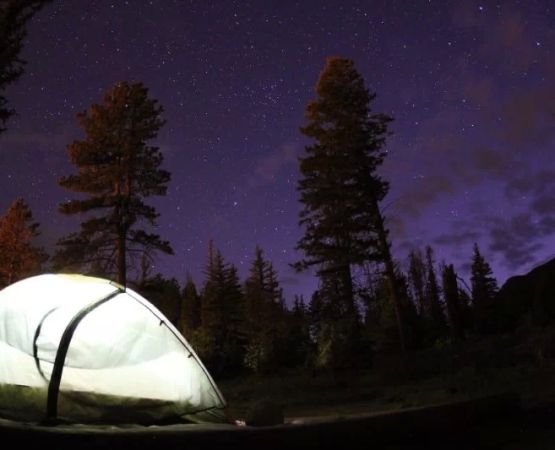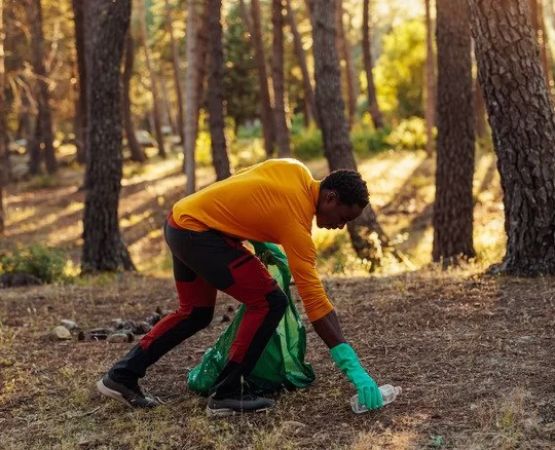Why Sustainability Matters in Outdoor Activities
As someone who loves spending time outdoors, I’ve always found it incredibly important to connect with nature. Whether it’s hiking in the mountains, kayaking on a serene lake, or just enjoying a day at the beach, the outdoors have always been my sanctuary. But recently, I started thinking more critically about how my outdoor activities impact the environment. That’s when I realized how important sustainability is when it comes to enjoying outdoor activities, and why we should all care about practicing eco-friendly habits while exploring the great outdoors.
1. Understanding Sustainability in Outdoor Activities
Sustainability in outdoor activities refers to engaging in nature-loving activities in a way that has minimal environmental impact. It means being conscious of our actions, respecting wildlife, reducing waste, conserving natural resources, and leaving as little trace as possible. I started paying more attention to the environmental footprint of my adventures—how much waste I left behind, whether I was using eco-friendly gear, and how I could reduce my overall impact. It became clear that outdoor enthusiasts have a responsibility to care for the natural spaces we cherish.
1.1 Protecting the Environment for Future Generations
Every time I set off on a new adventure, I’m reminded that nature is a gift, and it’s one we must protect for future generations. Without sustainable practices, we risk destroying the very places we love. By choosing sustainable outdoor activities, we can help preserve the beauty of our natural world. This includes everything from hiking on designated trails to ensuring we clean up after ourselves. I’ve learned that the simplest changes in how we interact with the environment can make a huge difference in the long run.
2. The Impact of Outdoor Activities on the Environment
When we think of outdoor activities, we often picture peaceful, pristine environments—untouched and natural. But the reality is that outdoor recreation can contribute significantly to environmental degradation. Hiking on fragile terrain, littering, or overfishing in lakes can harm delicate ecosystems. As I’ve become more aware, I’ve realized that every time we venture out, we are part of the cycle that can either harm or heal the environment. Outdoor activities like camping, boating, or cycling need to be done mindfully, with respect for the surroundings.
2.1 Climate Change and Outdoor Recreation
One of the major contributors to the environmental concerns we face today is climate change, and outdoor activities are no exception to this. As we enjoy the outdoors, it’s important to consider how our choices contribute to global warming. Carbon emissions from transportation to outdoor destinations, waste generated from food packaging, and the use of non-recyclable materials during outdoor activities all add to the strain on our planet. Through sustainable practices, such as carpooling, using eco-friendly gear, and reducing waste, we can reduce the environmental toll of our favorite activities.
3. Sustainable Practices for Outdoor Enthusiasts
To reduce the negative environmental impact of our outdoor adventures, there are several simple yet effective practices we can adopt. From packing out what we pack in, to choosing eco-friendly gear, small changes can go a long way in maintaining the natural beauty of our favorite outdoor destinations. I’ve compiled a list of sustainable practices that have helped me enjoy the outdoors while minimizing my environmental impact.
3.1 Leave No Trace Principles
The Leave No Trace principles are a set of guidelines that encourage outdoor enthusiasts to respect nature and minimize their environmental impact. I’ve found these principles to be invaluable, especially during activities like hiking and camping. The seven principles include planning ahead, staying on designated trails, packing out all waste, minimizing campfire impact, and respecting wildlife. By following these principles, we can ensure that the places we visit remain intact for others to enjoy.
3.2 Eco-Friendly Outdoor Gear
Another way I’ve made my outdoor activities more sustainable is by switching to eco-friendly gear. From sustainable hiking boots to biodegradable soap and recyclable camping equipment, the outdoor gear market has expanded to offer more sustainable alternatives. I found that brands offering environmentally friendly products, such as those made from recycled materials or using ethical manufacturing practices, not only provide a high-quality experience but also align with my values of sustainability. Choosing products that have less environmental impact is one of the most direct ways to reduce the harm done to the planet while enjoying outdoor adventures.
3.3 Supporting Eco-Conscious Outdoor Brands
While shopping for new gear, I also discovered that supporting brands committed to environmental sustainability is crucial. I’ve chosen to support companies that actively work to reduce waste, offset their carbon emissions, and engage in conservation efforts. Supporting eco-conscious brands means that my purchase is contributing to a larger movement towards sustainability, and it's something I feel good about. I recommend looking into brands that are transparent about their sustainability practices and that give back to environmental causes.
4. Educating Others on Sustainability in Outdoor Activities
One of the most rewarding aspects of adopting sustainable outdoor practices is sharing my knowledge with others. It’s not enough for me to enjoy the outdoors responsibly—I also want to inspire others to do the same. Whether I’m hiking with friends or participating in outdoor events, I make an effort to share what I’ve learned about sustainable practices. In my experience, people are more likely to adopt eco-friendly habits when they understand the impact their actions can have on the environment. Leading by example is key to building a community of responsible outdoor enthusiasts.
4.1 Inspiring Positive Change
I’ve been pleasantly surprised by how many people are open to learning more about sustainability in outdoor activities. Whether it’s encouraging friends to use reusable water bottles or organizing a group clean-up event at a local park, every little bit helps. The more we spread awareness, the more people will start making sustainable choices in their outdoor adventures. It’s not just about enjoying the outdoors; it’s about protecting it for future generations.
5. The Future of Sustainability in Outdoor Activities
As awareness around sustainability continues to grow, I’m hopeful that outdoor activities will become more environmentally friendly and accessible. Many outdoor companies and national parks are already taking action by adopting sustainable practices, and I’m seeing an increasing number of people eager to make responsible choices. The future of outdoor recreation is one where we can enjoy nature without harming it. It’s up to all of us to ensure that future generations have the same opportunities to explore the beauty of the world while protecting its delicate ecosystems.
5.1 Supporting Green Initiatives
To support the continued growth of sustainability in outdoor activities, I recommend staying informed about green initiatives. Many parks and outdoor organizations are actively working to implement sustainable practices, such as waste reduction programs, renewable energy, and wildlife conservation efforts. By supporting these initiatives—whether through donations, volunteering, or simply spreading the word—we can all contribute to a future where sustainability is at the forefront of outdoor recreation.






